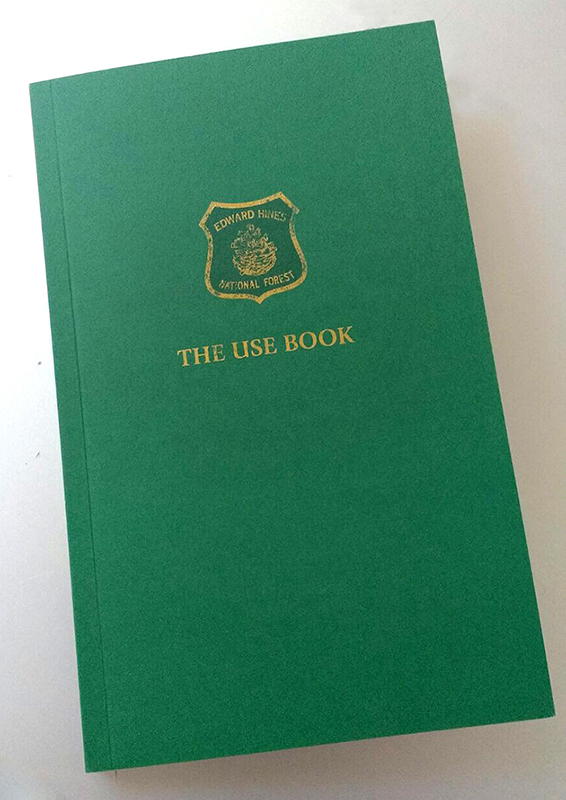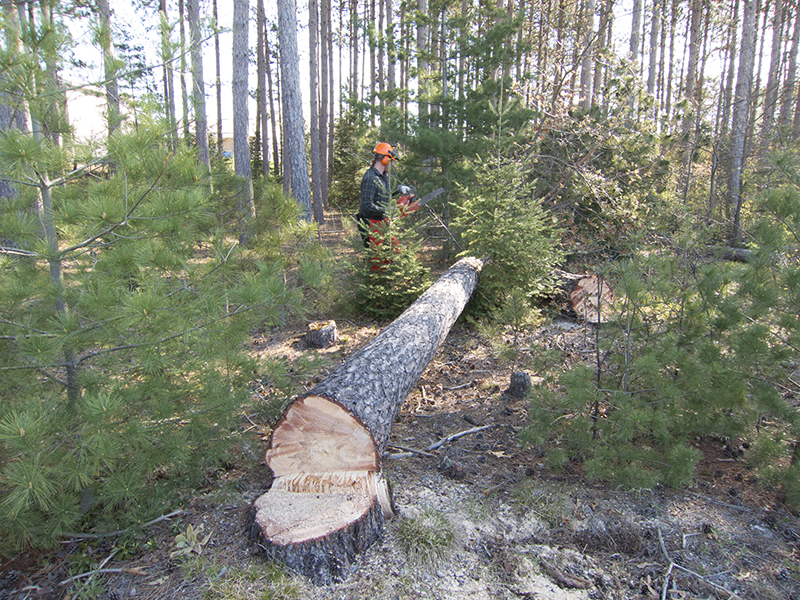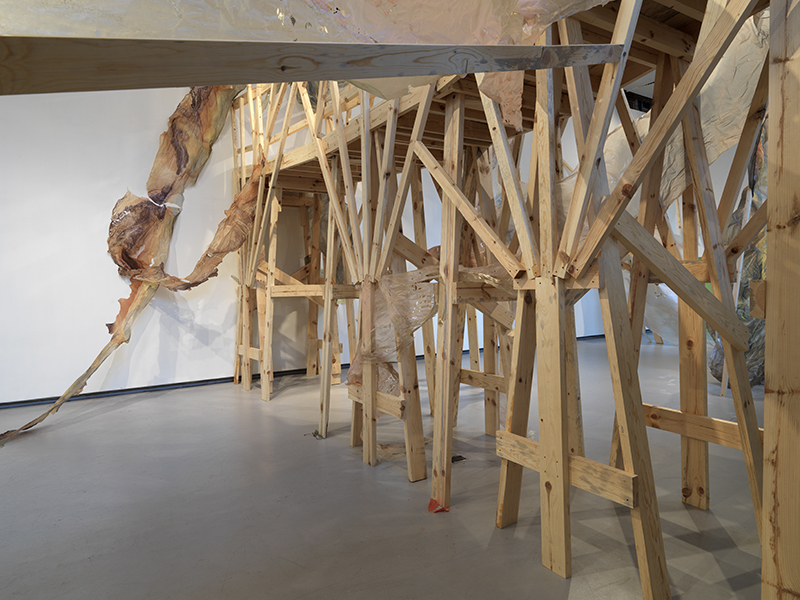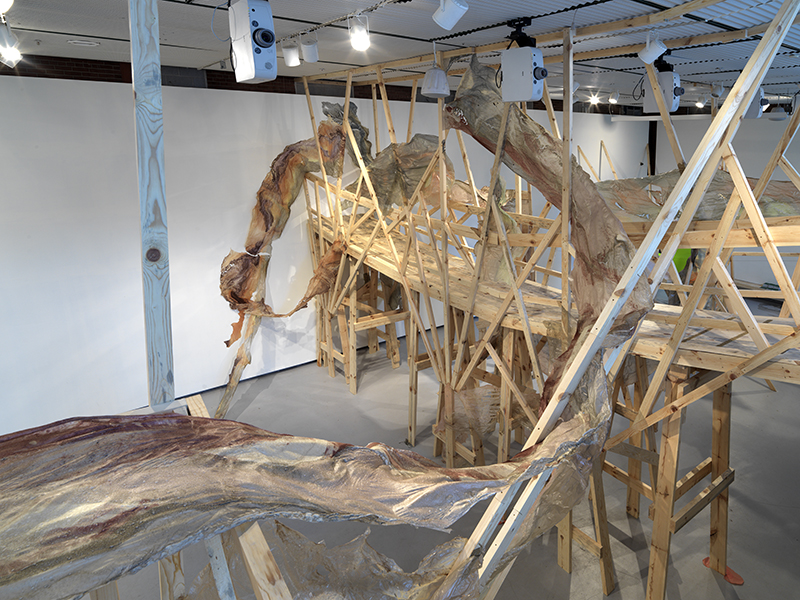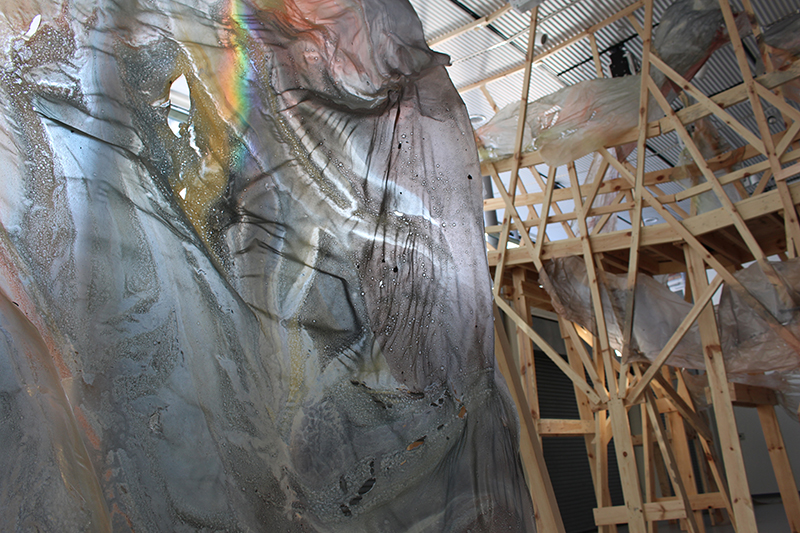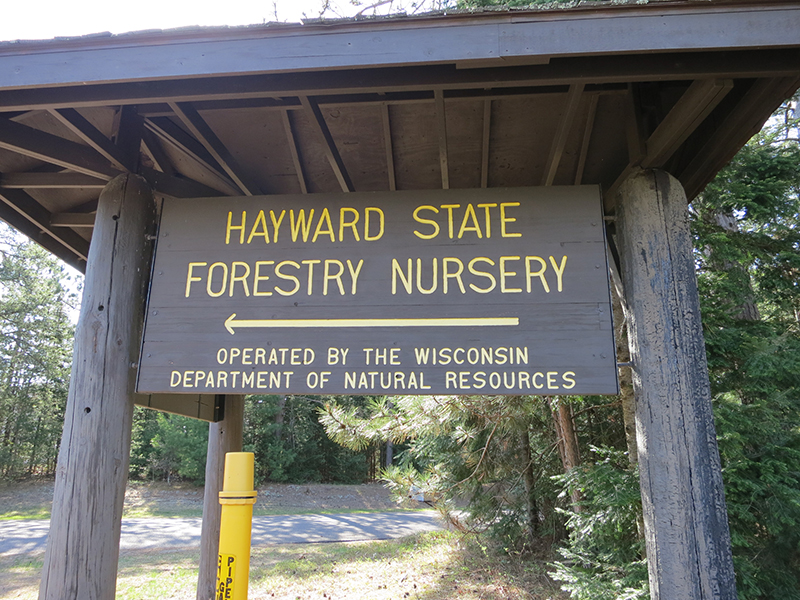Edward Hines National Forest, 2018
Hyde Park Art Center, Chicago
Sara Black and Raewyn Martyn collaborate to create the Edward Hines National Forest, an immersive built landscape that traces a material from plant to lumber and cellulose to produce hybrid forms that expose relationships between humans, the human-made and the larger ecosystem. Hines Lumber Company was one of the world’s largest lumber suppliers, founded in 1892, when the Chicago cityscape was under rapid expansion.
Edward Hines National Forest responds to this far-reaching industry that grew out of the south branch of the Chicago River. In adaptation of the values and functions of a National Forest System, visitors are able to move through a series of trellis-like structures that mimic timber-era architecture used to transport timber to Chicago.
The construction uses lumber and cellulose a substance extracted from the tree to create a biopolymer paint. These materials are derived from Diplodia pinea-exposed red pine trees grown in Hayward, Wisconsin. Skins of cellulose film are grafted into this architecture, transforming it into a hybrid forest system.The structures and materials are exposed from inside and outside, above and below, in an attempt to collapse conventional figure and ground relationships. Within this experience, visitors are drawn into coextensive relationships between surface, structure, skin and bones, human, non-human, inside and outside.
Diplodia Pinea is a fungus pervasive in human-planted pine trees in the US and kills off new growth.It is an artifact of the extensive cutover of these northern forests, visible as blue-grey stains in the wood grain. The cellulose used as a paint medium is colored using red pine bark tannins, along with mineral and human-made pigments. Mineral pigments include those found in rock forms common to the Hayward area: biotite, kyanite, magnetite, kaoline, Gneis Green (feldspar, siliceous quartz, granite, and olivine).
The accompanying Edward Hines National Forest Use Book brings together inexhaustive voices to consider the possibilities of past, present and future “use”.
